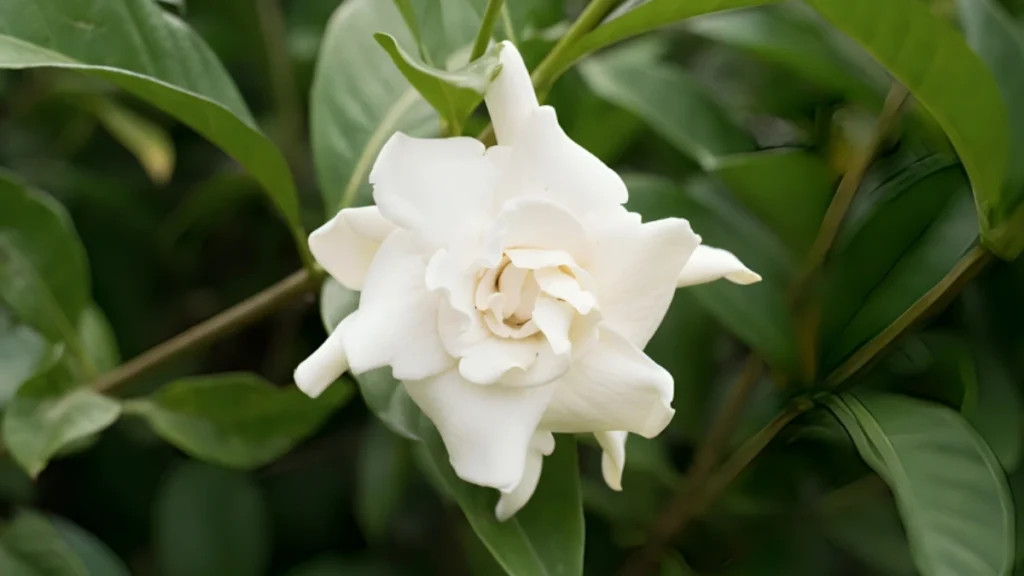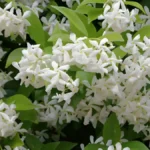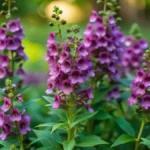A genus of blooming plants called gardenias is distinguished by its fragrant white or cream-colored blossoms. Native to the Pacific Islands, Asia, and Africa’s tropical and subtropical zones. Gardenia jasminoides is the scientific name for it. It’s easy to see why so many people are enticed to include this gorgeous specimen in their home landscaping, with its exquisite foliage and heady scent.There are many types of gardenia flowers that you can easily grow in your garden. Note that both people and pets can be poisoned by these flower.
Learn about gardenia plant care:
Due to their tendency to be a little picky, gardenias require special care. These are the main pointers for effective gardenia care.
Planting gardenias:
- Even though they can be grown in full sun, most gardenias thrive in partial shade or areas that get early morning sunlight. Acid-loving plants, gardenias favor soil with a lower pH. To improve the soil, add compost or well-rotted manure, and mix a teaspoon of agricultural sulfur into the planting hole to help reduce the pH.
- After filling the hole with the adjusted soil, plant the gardenia, making sure the top of the root ball is level with or just above the soil’s surface. To aid in settling the soil around the roots, give the plant lots of water.
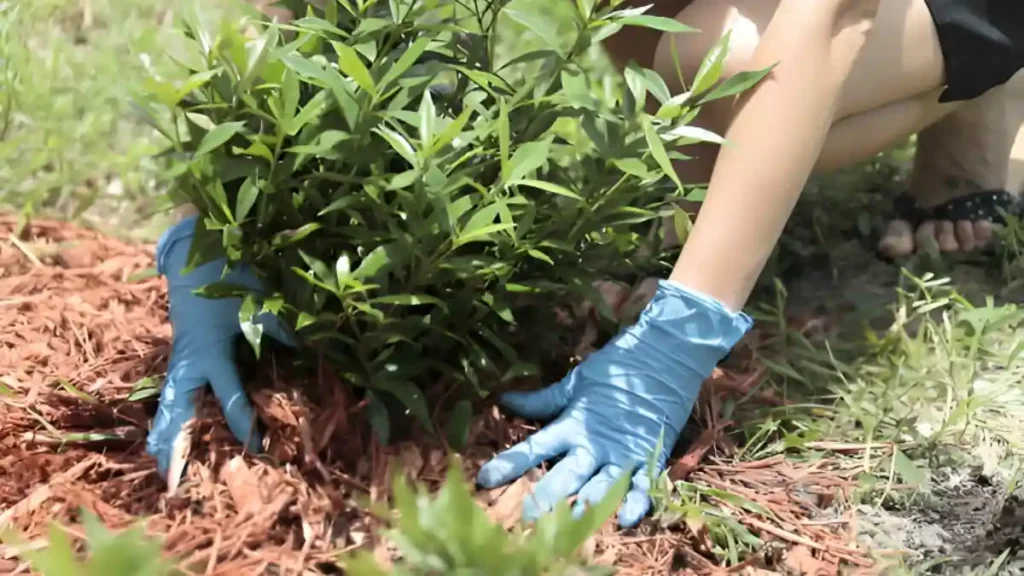
Everything about gardenia care:
Gardenias are lovely, aromatic plants that need special attention to flourish. This is some advice for taking care of it.
How to care for gardenia plant
- Adequately water
- These plant prefers around 1 inch of water each week. The best irrigation is drip irrigation, which minimizes watering during the winter and keeps water off the leaves, which can result in fungal leaf spots. The roots of gardenias should not be waterlogged, yet they do not like to be dry.
- Fertilizer for gardenias
Apply fertilizer with a high acid content to garden gardenias in mid-March and again in late June. To prevent overfertilization, it is better to use a little less than the required dosage. Steer clear of excessive fertilizer as this can burn the leaves or generate salt buildup, which can harm the shrub.
- Pruning gardenias
The green and brown wood should be shaped back when pruning using sharp garden shears. Once the plants have finished blooming, it is ideal to do this in late spring or early summer. However, this type of gardenia can survive with a cutback every other year; it doesn’t require pruning every season. To increase air circulation, remove any weak or dead stems.
- Propagating gardenia
The best way to reproduce gardenias is to root stem cuttings in the early spring. Remove the lowest leaves by cutting off a 3- to 5-inch section of the stem directly below a leaf node. Before planting the stem in the hole, dip its cut end in the rooting hormone. In a room that is at least 75 degrees, place your pots in indirect sunshine.
- Potting and repotting gardenia plant
The optimum time to repotte gardenias is in the spring when they are starting to emerge from their winter hibernation. If there are no insects or diseases but your plant appears less lively, you can also repot it. Increase the pot size and use a terracotta or natural stone pot.
- Typical issues and their solutions
Aphids, spider mites, mealybugs, and whiteflies are common pests that consume gardenias. Fortunately, treating most infestations is not too difficult. Numerous horticultural oils, soaps, and organic solutions can be used to control this. To treat infestations, you can also apply neem oil or insecticidal soap.
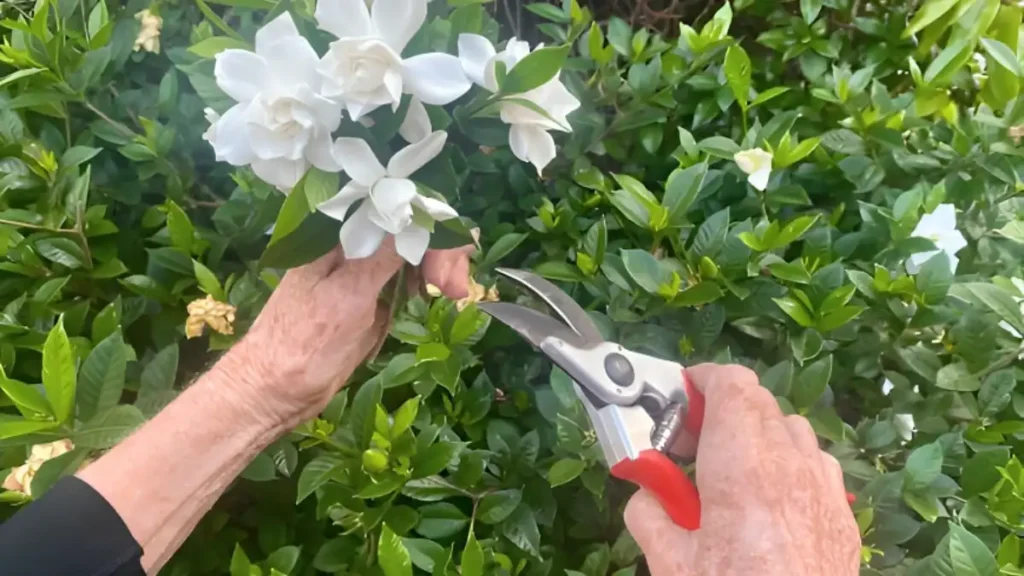
Conclusion:
The gardenia, with its glossy green leaves and lovely white blossoms, is a fragrant and charming addition to any indoor or outdoor area. It can flourish and repay you with its captivating scent and sophisticated look. You can use gardenias to adorn your garden by precisely following the above instructions.
Certainly! If you’d like to learn more, please consider following our WhatsApp Channel: Harvest Gardening
A frequently asked questions:
Q1. Why are the gardenia leaves turning yellow?
A1. Overwatering can result in root rot, which turns gardenia leaves yellow. Another factor that might cause gardenia leaves to become yellow is a shortage of iron or magnesium. Additionally, gardenias require bright sunshine to thrive.
Q2. How to grow gardenia from seed?
A2. Dry the seeds in a bright place for three to four weeks after removing them from the dry seed pods and washing them. Move the seedlings into pots with peat-based potting soil after they are a few inches tall. When the seedlings have three sets of leaves or more, move them to your garden.
Q3. How to propagating gardenia from cuttings?
A3. Select a 4-6 inch long, healthy, semi-hardwood cutting. After removing the lower leaves, plant in a well-drained mixture and dip the cut end in the rooting hormone. Usually, gardenia cuttings take 4–8 weeks to grow roots.
Q4. What is the best fertilizer for gardenias?
A4. An acidic fertilizer with a balanced mixture of nitrogen, phosphate, and potassium is ideal for gardenias. Since they are not actively developing in the winter, gardenias should not be treated during this time.
Q5. Are gardenias poisonous to cats?
A5. Indeed, gardenias are poisonous to cats and can have a variety of negative effects if consumed. Vomiting, diarrhea, and appetite loss are typical symptoms.

